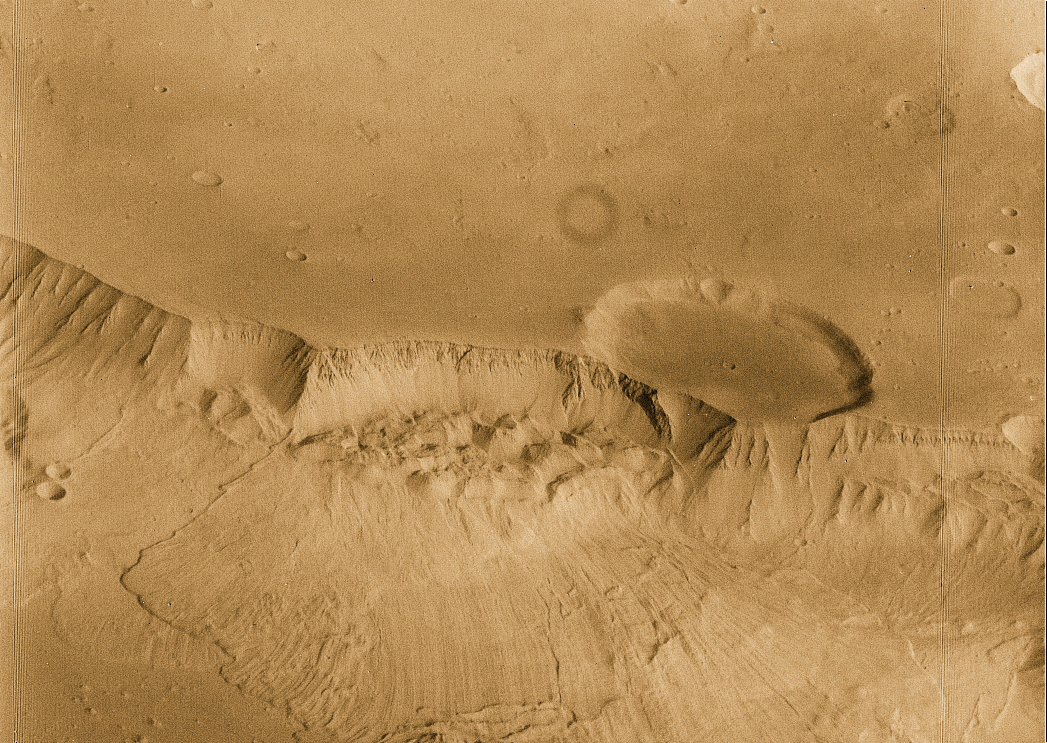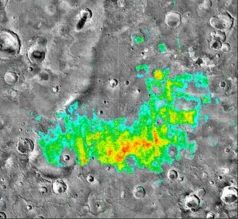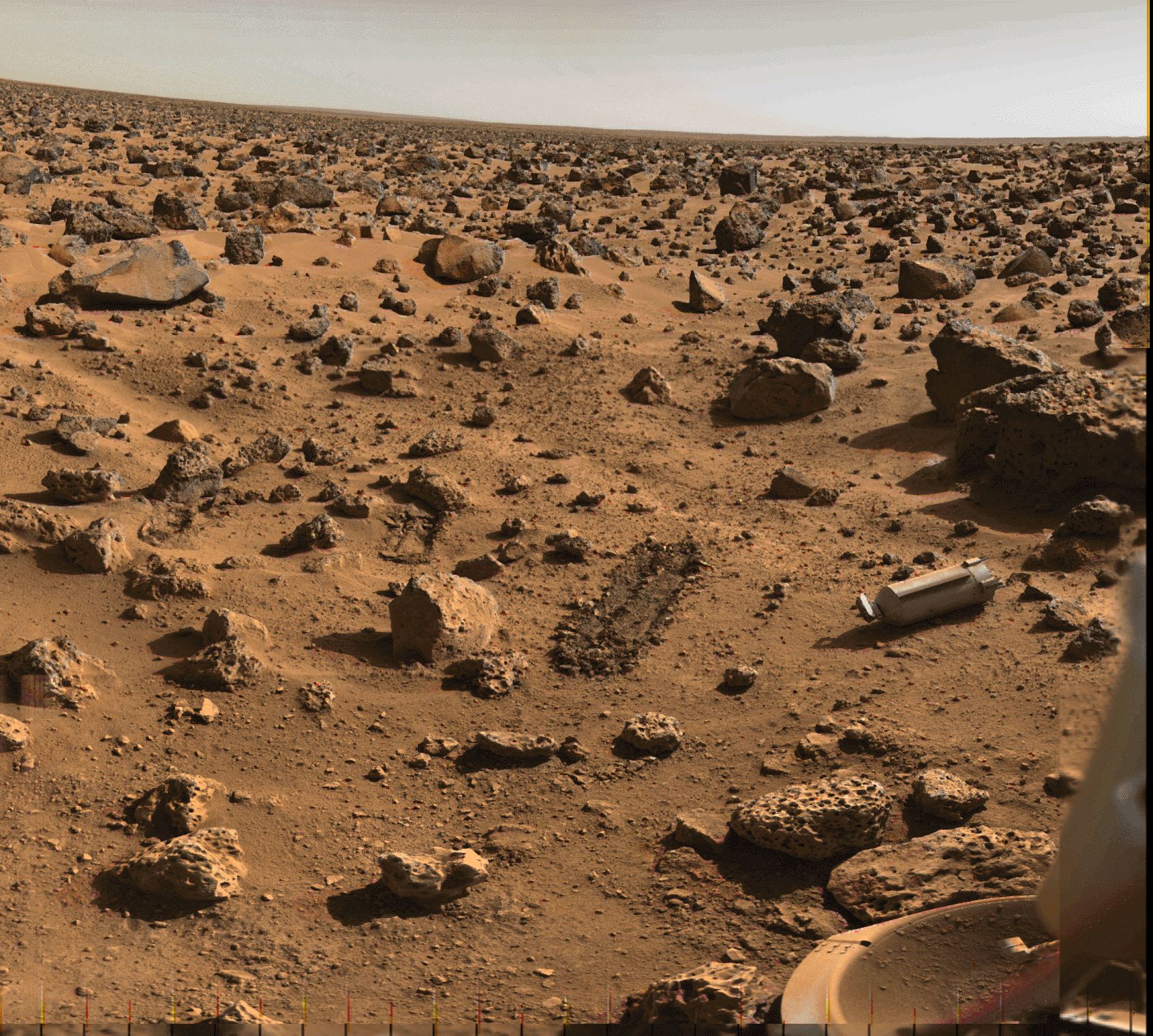Gravity | |
|
Martian gravity is about one-third the gravity on Earth. This is the main reason that the Martian crust can support volcanoes so much larger than those that exist on Earth. Taller volcanoes, which usually result in greater local relief, allow for more erosion. Rivers have a longer path to flow, and this elongated movement of water causes denudation along a greater length of mountain side. Taller volcanoes also offer more potential energy for rock- and landslides. While rocks will accelerate downhill at a slower rate than on Earth, they will have a longer path to tumble down. Overall, they have more potential for damage over a wider range, even though in any one area, reduced gravity will lessen the effects of the landslide. | |
Martian landslide Photo Credit: http://abyss.uoregon.edu/~js/images/slump.gif |
Biology | |
|
Currently there is no known life on Mars. If liquid water existed in the past, then there is a greater chance that some sort of life evolved on our alien neighbor. If there used to be vegetation on the surface of Mars, erodability would have been reduced to a certain extent. Plants and trees prevent rain water runoff. Increased retention of water leads to more vegetation, which in turn leads to more water retention. However, when some critical point is reached, denudation once again increases with increased precipitation. Current lack of vegetation leads to more active wind. The dust storms that prevail on Mars are unhindered, which leads to longer lifetimes and more dust saltation and deposition. Martian soils are found to be 60% SiO2 and 18% FeO and Fe2O3. On Earth, silica and iron oxides and hydroxides are major components of duricrust formation. Siliceous duricrusts are more than 95% SiO2, which is associated with both humid and arid environments. They occur in conjunction with ferricretes, which contain a lot of iron and are usually formed in tropical areas. Gray hematite (Fe2O3) has recently been found on the surface of Mars. On Earth, gray hematite only forms in standing water, in hot springs, or by volcanic activity. If it is found in cracks in rocks on Mars, it would indicate that it comes from groundwater that seeped into the rocks. This would provide solid evidence of liquid water in the past on Mars. If it is found in ash, that would point to a volcanic origin with no liquid water connection. | |
Hematite distribution near Opportunity's landing site Photo Credit: http://www.space.com/scienceastronomy/mars_hematite_040203.html | |
Time | |
| Martian history has been divided into three main epochs: the Noachian, the Hesperian, and the Amazonian. The Noachian era spans 4.6-3.5 billion years ago. It was the time when the rate of meteor impacts decreased, allowing the planet to cool. The oldest landforms, which are heavily cratered areas in the Southern highlands, are from this time. Toward the end of the Noachian epoch, Mars was a warm, wet world. It remained in that state until the early Hesperian period (3.5-1.8 billion years ago). The Amazonian era covers 1.8 billion years ago to the present. Not much erosion occurred during that era, so the landscapes we see on Mars are old, well-preserved features from when the Solar System was very young. | |
A rocky area of the Martian landscape Photo Credit: http://nssdc.gsfc.nasa.gov/image/planetary/mars/vikinglander2-2.jpg | |
| Back to Geology and Climate | Next page: References and Acknowledgments |
| Back to Main Page | |